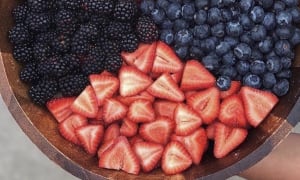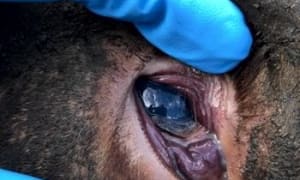AT Koala Cherries in Yarck, the yield is down but the quality is up.
It’s been a clean fruit year, and Simon Rouget, co-owner and Chief Production Officer at the orchards, has experienced high pack-out rates with a larger percentage of fruit going in the box, with minimal waste.
Prices are good, and the fruit is relatively defect-free due to the absence of rain at harvest time.
But though the fruit may be of premium quality, the national yield is lower than even the industry expected, and with a large export market taking a fair bit of the crop out of the system, cherries have been a bit scarce on the domestic market.
With weather events and fires decimating cherry orchards in the Adelaide Hills, cherry growers have not been spared the ravages of the season, and with Koala Cherries entering their highest risk period for fire, Simon is understandably concerned.
Latest Stories
But with the majority of the fruit harvested there is relief in knowing that efforts can now be concentrated on defending the orchards should the situation arise.
Defending the cherries is a major undertaking for the Rougets who invest significantly in an array of technologies and systems to combat the bird problem which inevitably comes about when the fruit ripens.
This year has been more difficult than previous years, with parrots even eating the buds in winter which in past years was never an issue.
And Simon believes this is a direct result of the current conditions.
“There have been heaps of birds this year and I believe some of these birds have migrated south, and the result is a lot higher pressure on the orchard than other years,” Simon said.
“Around Shepparton they haven’t grown the usual crops because of the cost of water, and in other areas the crops have failed, and so the orchards become the only green bit in the landscape, and attract the birds and the insects.”
Should the Rougets not employ a variety of means to detract the birds, Simon knows a huge percentage of fruit would be lost.
And as it is, even with employing 15 staff members around the clock responsible for pest control, Koala Cherries lose whole outside rows of cherries and the corners.
“We struggle to protect these areas, and the birds sneak in and out without you even realising,” Simon said.
“It’s dawn and dusk that are also particularly difficult, and so we’re constantly trialling new methods to address the issue.
“We bought three drones this year to try.
“Two to three years ago we also trialled drones, but didn’t have a huge amount of success keeping them in the air and found them quite difficult to operate.
“This year, I have mixed feelings about them.
“They are effective for the time they are in the air, however the batteries only last 25 to 30 minutes and then we have to land them and change the batteries.
“There are cameras and speakers on them, and we can play distress calls and bird noises, and when they’re up and flying and working, they do make a significant difference.
“However, this is also relevant to how many birds are in the orchard.
“Most days they will just clear out when the drones appear, but if there are a lot of birds around, they take more risks and seem to believe there is safety in numbers.
“Then the drones almost become a source of interest and some birds are attracted to them.”
The drones are also costly and incredibly labour intensive to operate, and so the Rougets employ a combination of measures to combat the problem.
There are mannequins and speakers in fields, constant patrolling, and the use of motorbikes and horns.
Propane cannons have provided a degree of success, but the problems with noise complaints and concerns with them catching fire, have deemed them more a hindrance than help.

Permanent netting does work, but is not completely satisfactory.
“The netting changes the way the fruit grows and ripens, with the area becoming somewhat of a micro-climate, with the quality of the fruit subtlety effected,” Simon said.
“The lack of uv reduces the sugar levels in the fruit, and the yield has also been down on the netted trees as the bees don’t like the netting.
“With the other trees we get a lot of assistance from native bees, and we have decided that we will need to add additional hives to the netted area, as the trees really should be fruiting more than they are.
“If we get this sorted nets are the possible solution, as the fruit has no bird damage, and less defects from wind and hail, so it takes the risk of weather events almost out of the equation.
“However, it is also an expensive undertaking and could potentially add a few extra dollars to each kilo.”
With price point a constant consideration, the Rougets have also invested in lasers to repel the birds.
Perceiving the approaching laser beam as a physical danger, the technology has the potential to deter birds and works fairly effectively with the cockatoos in particular.
Most effective during sunrise and sunset, and in overcast, rainy or foggy conditions, the birds do not get used to the laser beam’s implied threat.
The Rougets have adapted the laser for their purpose, and though they have experienced a few malfunctions, it has proven cheaper to run and they have been able to program it and synchronise it to a timer.
“Our strategy is to not rely on one thing,” Simon said, when discussing the use of the lasers.
“It’s just the more uncomfortable we can make the birds the better.”
And just as farming changes every year, so do the combination of solutions to problems, and as Simon said “In farming there are always a thousand different ways of having a similar result.”













